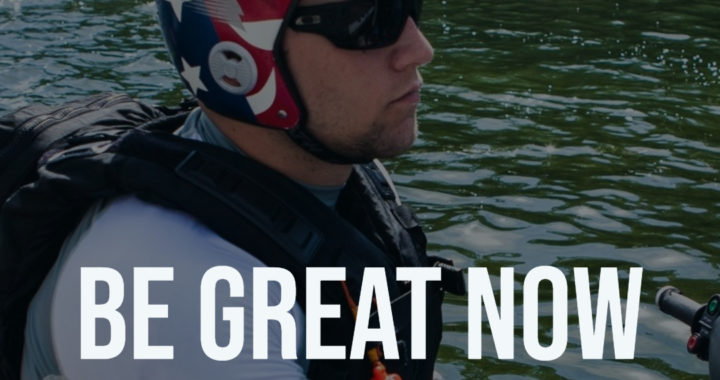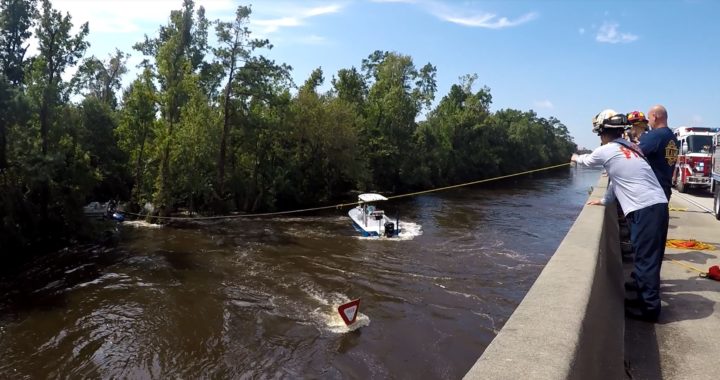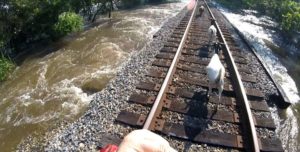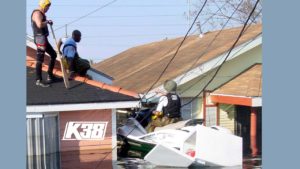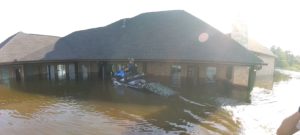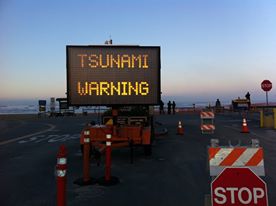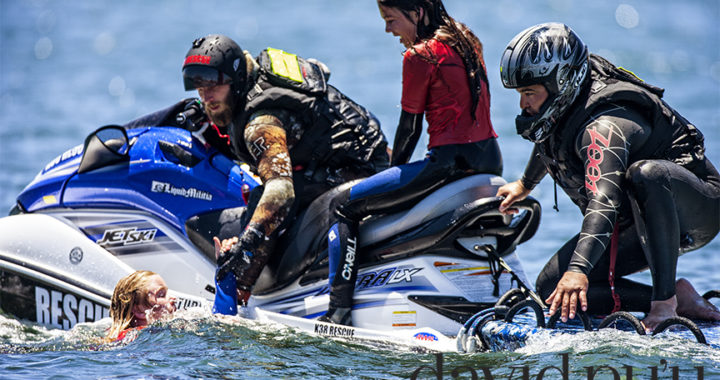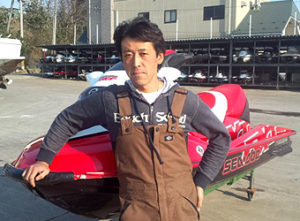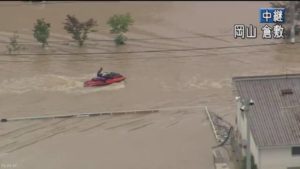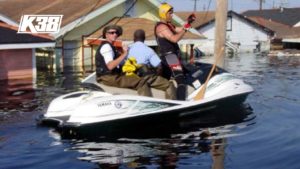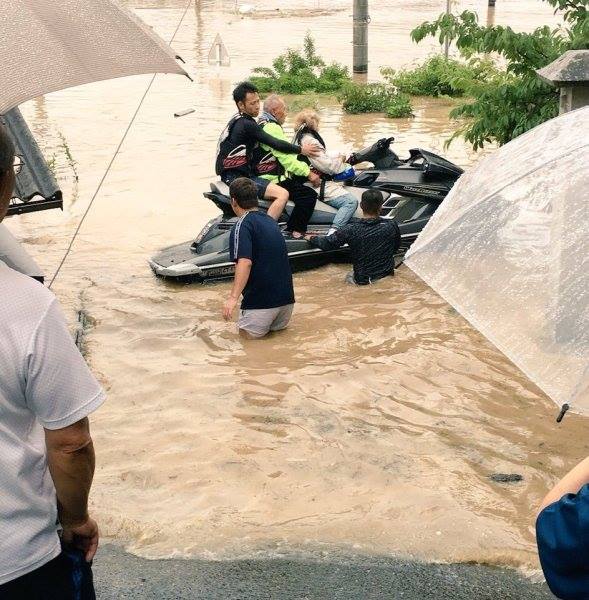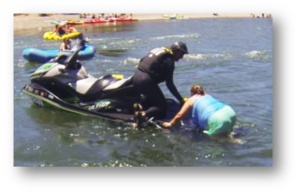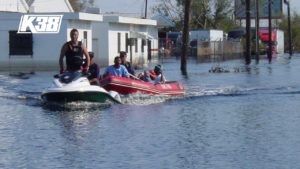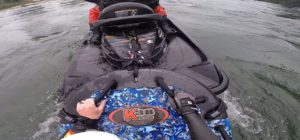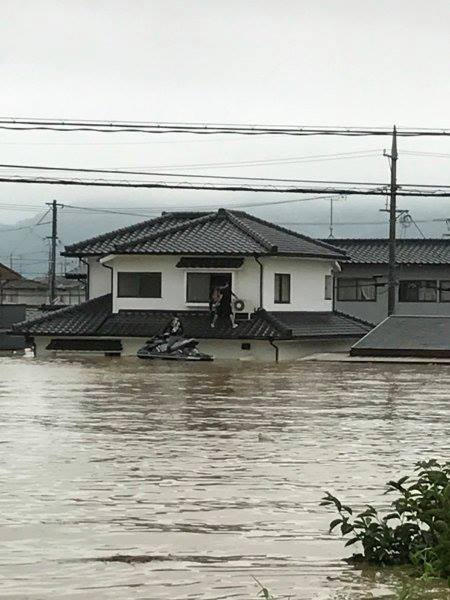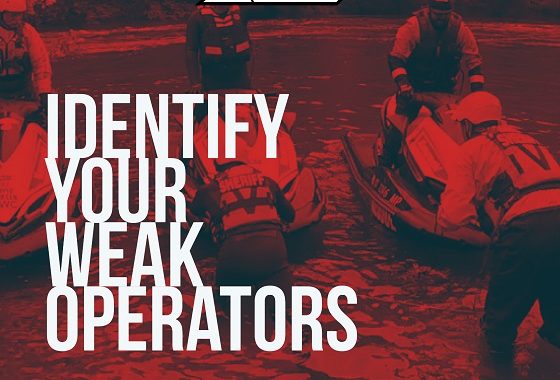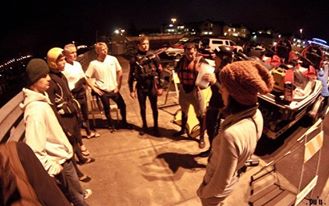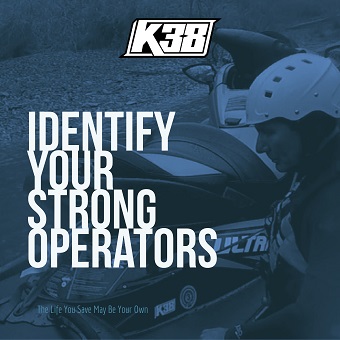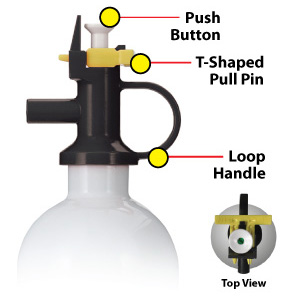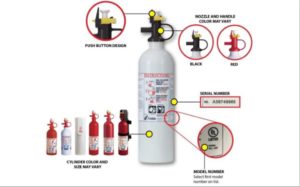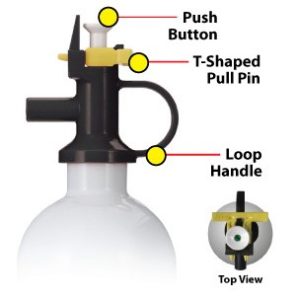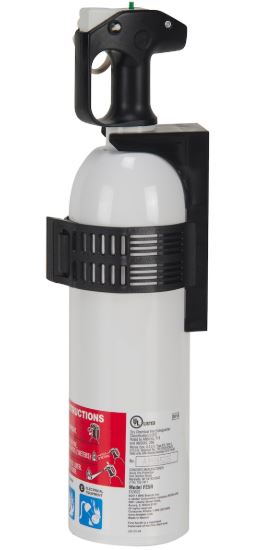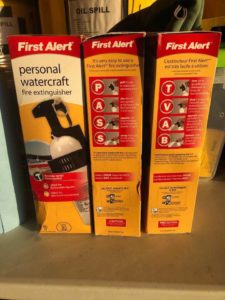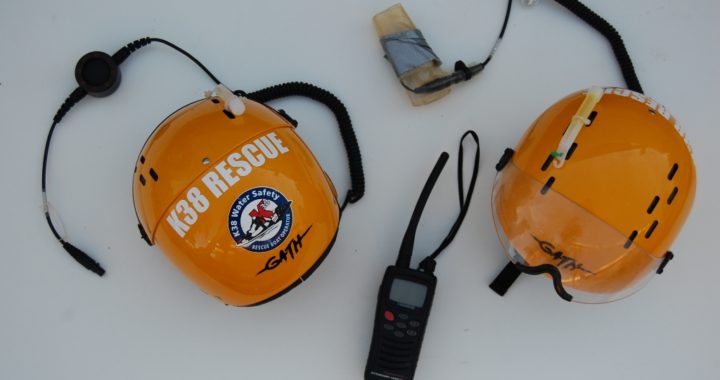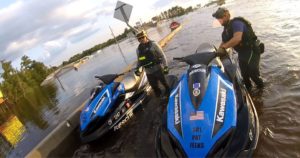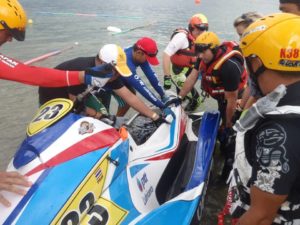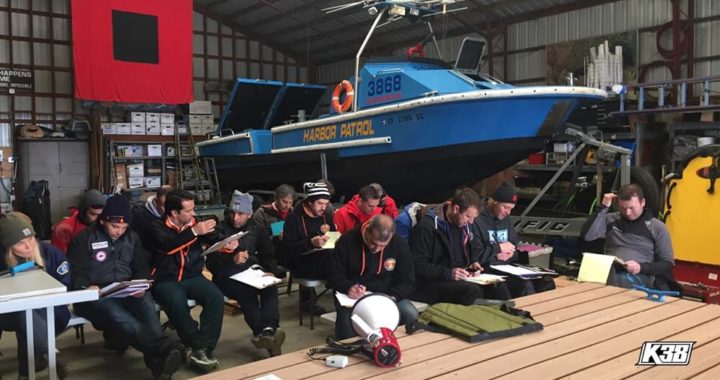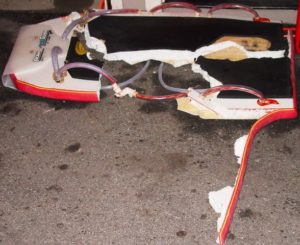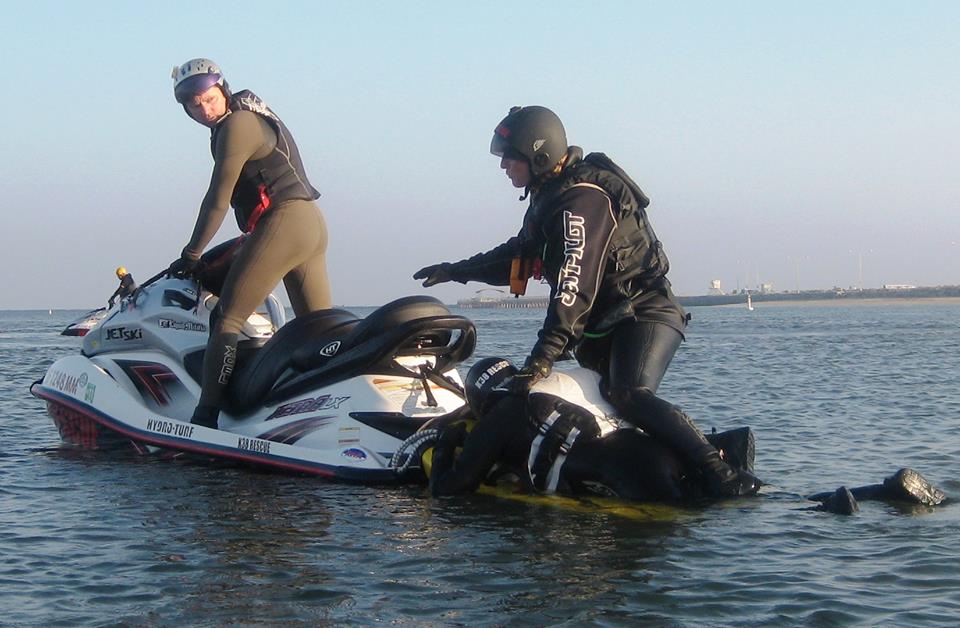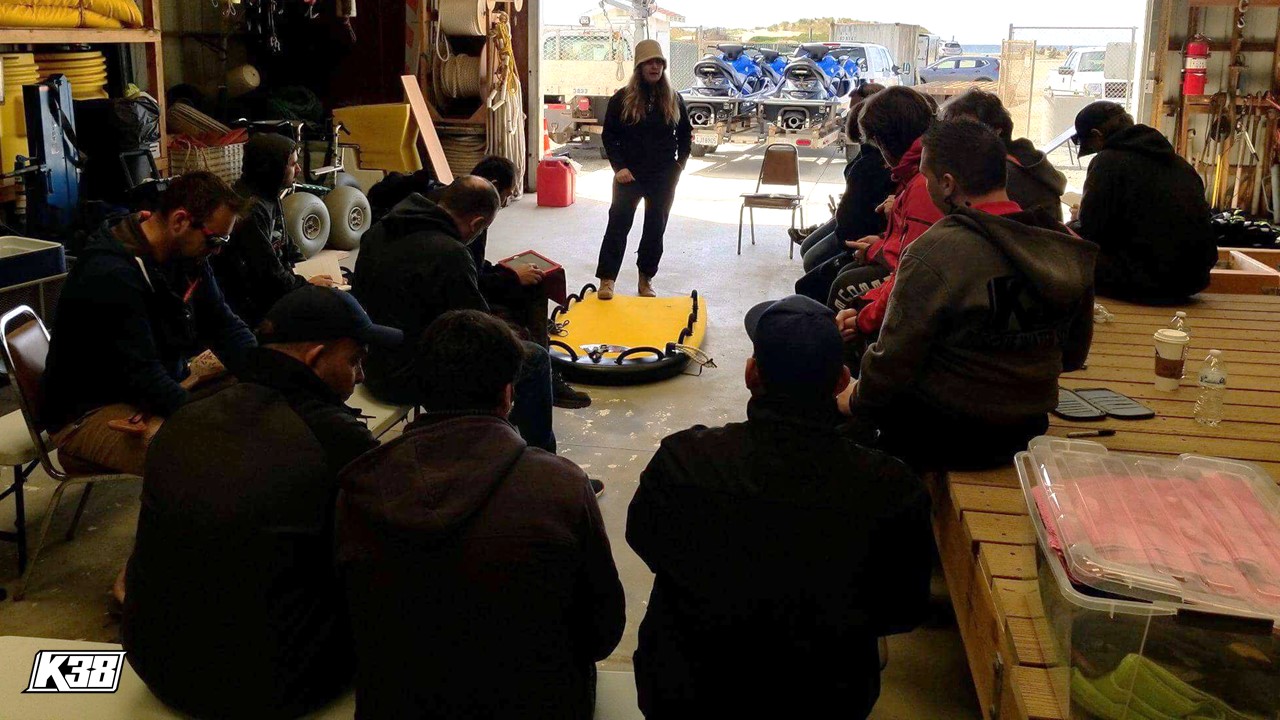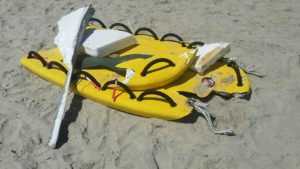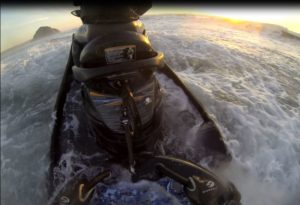If you have the ability to put on a lifejacket that is even better! (Or have some type of flotation with you if you are not a strong swimmer). Do so immediately and properly secure all the buckles for a good fit. If you have children with you take care of them first.
Remember an adult lifejacket may not be the best measure for small children, they can slip out of them due to inadequate sizing! Let the children know verbally what is happening so they are not scared, give them key information to help them deal with the situation and tell them if they fall overboard to go into a 'floating position' or to swim towards shore, or if the PWC capsizes to 'stay with the PWC'.
If you have brought a small pet with you, be mindful of their behavior. They may be distressed and want to bite at others. Make sure you have secured them with a collar, leash, muzzle or a very firm grip. Remember, pets are protective and may not respond to people helping them positively especially a uniformed person.
If you are bringing any electronics such as a smart phone, be mindful this is a wet ride and items easily fall overboard or out of pockets and you will get wet or lose them!
If you have been a witness to a drowning or lost a loved one, pet or livestock, you will have to hold on a little longer till you get to a safe area. It will be important for you to seek help and to talk about the experience at some point. Evacuations are a long process of loss to many degrees.
At this critical time, 'Life and Safety' are most critical and should be your primary concerns.
Once safe, everything else can be dealt with, but first its imperative to get you out of a risk zone and to a safe zone.
EMERGENCY
If you experience a problem underway, such as the water jet pump being fouled with debris, or the PWC capsizes or you fall off the PWC, you can do something to help yourself and others. But first discuss it before your board a vessel!
If the Personal Water Craft capsizes remain calm! Tell yourself not to panic or be afraid. Especially if you do not have a fastened lifejacket. What you do next is vital.
Since you have been observing for hazards you already know where the currents are going and any downstream or upstream or surrounding hazards, you may have to start swimming away from objects if you are going to drift into them.
These may be called strainers and they can be deadly. A strainer is a fixed object that water can pass through but objects get pinned against them.
If you are not taking care of small children or pets, immediately when you surface roll onto your back and float face upward to the sky, and relax and breathe.
Get control of your thoughts and take a look around for safe landings or objects to grab onto. You may have to help the Personal Water Craft operator to right their capsized PWC. It's not hard to do! The sooner the PWC gets righted the sooner you will reach safety.
Re-boarding from the water line can be exhausting. Take it slow and counter balance. If you focus it will be easier to determine what needs to be done and you will do great!
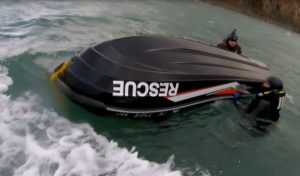
Righting a Capsized Boat
1. You will see an intake with metal bars on it, that's the water intake screen. Place your fingers on the outside of the bars and start to pull the PWC towards you. You can also place a knee up on the edge of the capsized PWC, and give it a few tugs!
2. Once the PWC starts to roll over, it will settle in an upright position. For four stroke engines we wait 10 seconds till we restart, but if the PWC is upside for over two minutes it becomes more difficult and the engine compartment can start seeping water making it heavier than usual.
3. The Engine Cut Off Switch will be needed to re-start the craft, the operator should have this, but they can break or float away. If using a Kawasaki Ultra model, open the glove box below the helm and remove the immobilizer key and re-key it to start. You will hear a chirping sound.
4. Re-board the craft from the back stern deck, not the sides. Stabilize and take your time. Observe for hazards you may be floating towards.
You will need the engine cut off switch to restart the engine. If you are on a BRP Sea Doo the engine cut off switch on newer models is digitally coded, as are the Kawasaki Ultra models immobilizer key. Keep all electronics away from these!
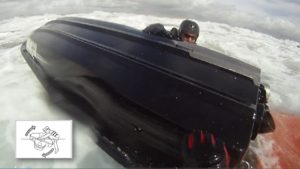
Follow the diagram on the stern of the PWC (If it has not been removed)
UITEMATE
If you find yourself in the water, a simple technique of floating will help you and others! Do not panic! Learn how to float on your back using the Uitemate technique from Japan.
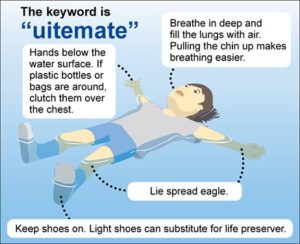
Uitemate
Japanese technique "uitemate" on preventing drowning
Uitemate Method
When you get closer to a landing area, start to think ahead of what you need to do and be mindful of. Allow the Personal Water Craft operator to complete their final maneuvering. Continue to counter balance.
You may find that your legs have gone to sleep in a strange position or the cold has caught up to you. Take your time moving and getting off the Personal Water Craft.
Be mindful of the soil or area your feet will make contact with. Do not dive. Do not jump! Place your feet down slowly and firmly. You do not want to roll an ankle or trip and fall into the water.
If you can and are physically able, assist others from disembarking.
If you have any open cuts or wounds, you may need to get them cleaned out from contact with the water.
Now its time to get ready for your next evacuation plan, a shelter or a staging area or counseling!
Hopefully you never have this experience but these are some of the items I would like you to be aware of so you don’t experience any fear, frustration or worry. Better to know something than to know nothing at all.
Thanks for your time! Ask any questions you may have!
Special thanks to our Everyday Heroes in these photos. I am sending all my best thoughts to the responders in Japan, please join me!
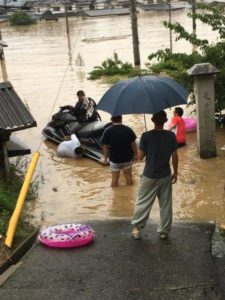
Special thanks to this blog post: http://netgeek.biz/archives/122152
_________________
Posted 11.25.2018
Have any questions? Join the Rescue Water Craft Association
and discover what your community is doing to modernize standards, safety and reduce liability!
Join the Rescue Water Craft Association
Content Creator: Shawn Alladio cares most about her community and the culture surrounding the safety of event service providers and Rescue Water Craft operators, working hard and dedicated towards protecting their reputation, distributing safety information and continuing to train these amazing individuals to the highest standards of care.
Use at your own risk. Please take a qualified Rescue Water Craft training course and maintain proper records and respect all the PWC, RWC, PPE, and gear OEM manufacturer warning labels and cautions.
